#Climb Mount Everest In Nepal
Text
Ladakh for Bird-Watchers: Spotting Rare Himalayan Species
Embarking on a Leh Ladakh tour is a dream come true for adventure seekers and nature enthusiasts alike. Nestled in the breathtaking landscapes of the Indian Himalayas, this region offers a plethora of natural wonders to explore. While most visitors are captivated by the majestic mountains and pristine lakes, bird-watchers are in for a special treat. Ladakh is home to an extraordinary variety of avian species, including rare Himalayan birds that attract bird-watchers from around the world.
Ladakh: A Bird-Watcher's Paradise
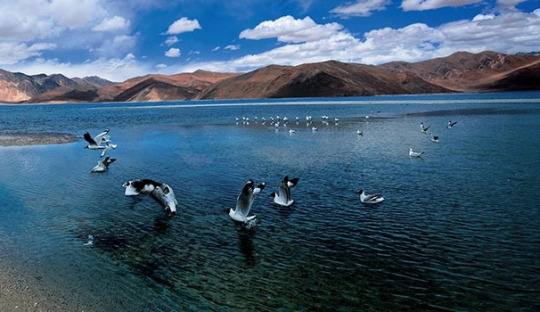
The rugged terrain and diverse ecosystems of Ladakh create an ideal habitat for a wide range of bird species. As you embark on your Leh Ladakh tour, you will be greeted by the melodic chirping and fluttering wings of some of the most beautiful and elusive birds in the world. The region's varied altitudes, ranging from the valleys at around 2,500 meters to the high mountain passes reaching over 5,000 meters, provide unique niches for different bird species.
For avid bird-watchers, the Hemis National Park is a must-visit destination in Ladakh. Spread over 4,400 square kilometers, this sanctuary is home to rare and endangered species like the Black-necked Crane, Tibetan Snowcock, and the elusive Snow Leopard. As you explore the park's picturesque landscapes, you'll have the opportunity to spot exquisite birds such as the Himalayan Griffon, Golden Eagle, and Lammergeier. The park's diverse flora and fauna make it a bird-watcher's paradise.

Climb Mount Everest: An Epic Adventure
If you are a thrill-seeker looking for the ultimate challenge, then climbing Mount Everest should be at the top of your bucket list. Situated in the majestic Himalayan range, this iconic peak stands as the highest point on Earth, towering at an awe-inspiring height of 8,848 meters. Conquering Everest is a feat that only a select few have accomplished, making it a truly epic adventure.
Embarking on a journey to Climb Mount Everest requires immense physical and mental strength, as well as rigorous training and preparation. The ascent demands facing extreme weather conditions, negotiating treacherous slopes, and navigating through the notorious Khumbu Icefall. The climbers must acclimatize themselves to the high altitudes, ensuring their bodies adjust to the thin air and reduced oxygen levels.
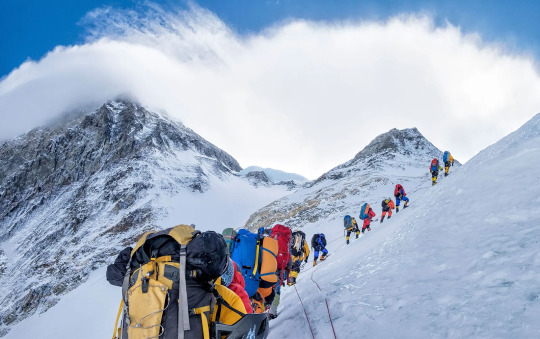
However, the rewards of reaching the summit of Mount Everest are unparalleled. Standing atop the world, surrounded by the majestic Himalayan peaks, is an experience that words fail to capture. The sense of achievement, the breathtaking panoramic views, and the realization of pushing your limits to the extreme make the climb an extraordinary adventure of a lifetime.
Conclusion:
Ladakh, with its stunning landscapes and rich biodiversity, offers a haven for bird-watchers, where they can witness the rarest Himalayan avian species in their natural habitat. Meanwhile, climbing Mount Everest presents an ultimate test of human endurance and an opportunity to conquer one of the greatest challenges on the planet. Whether you choose to explore the skies or conquer the highest peak, both experiences in Ladakh promise unforgettable adventures that will leave you with memories to cherish for a lifetime. So pack your binoculars or your climbing gear and embark on an extraordinary journey that will ignite your spirit of adventure.
0 notes
Text
Come autumn, Nepal will deploy heavy lifter drones to transport garbage from the 6,812-metre tall Ama Dablam, south of Everest. This will be the first commercial work an unmanned aerial vehicle does in Nepal’s high-altitude zone.
The heavy lifter from China’s biggest drone maker, Da Jiang Innovations (DJI), will take on tasks traditionally handled by Sherpas. Officials believe it will help reduce casualties on Everest.
Then, in spring (March-May), DJI drones, which make sounds similar to a swarm of bees, will be put to work on Everest.
It will fly to Camp I (5,943 metres) to supply ropes and ladders to prepare routes and bring garbage to the Everest base camp at 5,364 metres.
On Sunday, a tripartite memorandum of understanding (MoU) was signed between the Sagarmatha Pollution Control Committee, the Khumbu Pasang Lhamu Rural Municipality, and the Airlift Technology Pvt Ltd for the use of advanced drone technology to efficiently manage garbage in the mountains of the Khumbu region.
In April, Chinese drone maker DJI conducted the world’s first drone delivery test on Everest.
“After a successful test in April, we plan to use drones commercially in the Everest region,” said Jagat Bhusal, chief administration officer of the rural municipality that hosts Everest.
The test result showed that the DJI FlyCart 30, the long-distance heavy lifter drone, could airlift 234 kg per hour between Camp I and Base Camp, a task usually accomplished by at least 14 porters in six hours.
Drone manufacturer DJI is under the microscope as US lawmakers push for a ban on Chinese drones, amid deteriorating relations between the US and China, the world’s largest trading nations.
Nepali officials and mountaineers, however, see the drone as a life-saving vehicle.
Traditionally, local Sherpa guides are responsible for transporting supplies and clearing trash on Everest. They may need to cross the icefall over 30 times a season to transport supplies such as oxygen bottles, gas canisters, tents, food, and ropes.
All climbers and guides must navigate the icefall on the route to the world’s tallest peak. The icefall is so notoriously dangerous that even experienced Sherpas hesitate to move when the sun shines.
The Khumbu Icefall, a river of ice a kilometre or so long, is usually crossed at night or early morning, with climbers putting headlamps on their helmets.
Normally, the route is crossed early in the morning, when the ice blocks and the hanging glaciers are stable and avalanche risks are low.
During the day, as the sun warms the mountain, the hanging glaciers melt, and ice crumbles, increasing the risk of avalanche.
“Using drones will help us avoid the dangers in the Khumbu Icefall,” said Bhusal.
On April 18, 2014, an avalanche resulting from a falling serac buried 16 Sherpa guides in the Khumbu Icefall, eventually leading to the cancellation of the season’s expeditions.
Last year, three Sherpa guides mobilised to prepare the routes were buried under the ice masses triggered by an avalanche in the Khumbu Icefall. Their bodies are yet to be recovered.
The Himalayan Database and the government records show that nearly 50 individuals died on the icefall between 1953 and 2023.
The climb from Everest Base Camp to Camp I takes six hours. Between these two camps lies the Khumbu Icefall, the most treacherous part of the route.
The most exciting and easiest part of the route is reaching Camp II (6,400 metres), which takes four hours from Camp I.
There is a set of restrictions in the mountains for carrying loads.
According to government rules, workers climbing high altitudes must not carry loads exceeding 20kg between 5,000 and 6,000 metres, 17 kg between 6,001 and 7,000 metres, 14 kg between 7,001 to 8,000 metres, and 12 kg for altitudes above 8,000 metres.
“Yes, there are concerns that the machines may actually cut jobs. But our sole purpose is to reduce potential deaths in the Khumbu Icefall, the danger zone,” said Bhusal.
“We will train Sherpas, as drone operators cannot handle tasks at the higher camps. In the future, all work will be done by Sherpas.”
In the trial phase, the drone could lift 30 kg from Camp I. However, its performance dropped to 18 kg from Camp II.
“Based on the MoU framework, we will soon sign a commercial agreement with the drone supplier,” said Bhusal. “The municipality will monitor all the activities.”
The municipality has, so far, spent Rs800,000 on the trial.
Climate change is melting snow and ice, exposing even more garbage and bodies that have been covered for decades on Everest. This waste pollutes the natural environment and poses a severe health risk to everyone who lives in the Everest watershed.
Nearly 100 tonnes of garbage were collected during this spring climbing season from Everest and Lhotse, which share the same base camp.
According to the Sagarmatha Pollution Control Committee (SPCC), 77.19 tonnes of waste was collected from the Everest base camp alone during the Spring 2024 climbing season. With 8-9 tonnes coming from the higher camps brought down by the expedition agencies, the SPCC collected 85 tonnes of waste this spring.
The breakdown of collected waste shows burnable garbage at 27.99 tonnes, recyclable garbage at 7.51 tonnes, human waste at 27.53 tonnes, and kitchen waste at 14.15 tonnes. The Nepal Army also collected over 11 tonnes of garbage.
#mount everest#trash removal#pollution#good news#science#environmentalism#nepal#environment#mountaineering#mountain climbing#climate change#climate crisis#global climate change#china#drones#unmanned drones#sherpas
9 notes
·
View notes
Text

More Carol art! 🏔️ This was such a pleasure to paint - all the BG designs were, to be honest!! This is another painting that only shows up for a few seconds as Carol is flipping through channels at the beginning of episode 1, so now's your chance to get a good look at it!! 👀 Thanks for looking and please give Carol and the End of the World a watch on Netflix!! Showrunner: Dan Guterman BG design: Alex Myung Art direction: @ellemichalka
#now playing#watch now#snow#winter#cold#ice#climb#mountain#hiking#climbing#Everest#nepal#mount everest#lead#leadership#background paint lead#supervisor#background painting#background#carol#carol and the end of the world#cateotw#adult animation#animation#netflix#netflix animation#allisonperryart#allison perry
20 notes
·
View notes
Text
Manaslu base camp altitude

The Manaslu base camp altitude trek offers a thrilling adventure for outdoor enthusiasts looking to explore the Himalayas. Experience the awe-inspiring Manaslu base camp altitude trek, where you can witness the majestic beauty of the Himalayas up close. This trek is perfect for those seeking a unique and unforgettable adventure in one of the world's most stunning mountain ranges.
Visit us: https://asc360.com/packages/manaslu-expedition/
#Manaslu base camp altitude#climbing everest base camp#annapurna base camp package#nepal trekking mount everest base camp#annapurna base camp tour#annapurna base camp trek package#trekking to annapurna base camp#annapurna base camp price#india#nepal#uk#usa
1 note
·
View note
Text
Mountain Queen Llakpa Sherpa is a Survivor and Inspiration to Millions
I climbed Ayers Rock, but there is not way I could ever accomplish what getting to the top of Mt. Everest ten times!
https://wp.me/p2v8yf-6xm
#mountainqueen #llakpasherpa #netlfix
Watching this documentary fave me flashbacks of when I climbed Ayers Rock in Australia. That climb was an infamously dangerous spot where many tourist lost their lives. As a matter of fact, my group’s climb was postponed b a day due to an unfortunate tourist accident.
The first Nepali woman to summit and descend Mount Everest, now a single mum working at a Connecticut Whole Foods, heads back to…
#black podcast#documentaries#documentary#lhapka sherpa#mount everest#mountain climbing#mountain queen#nepal#netflix#podcast#the summits
0 notes
Text
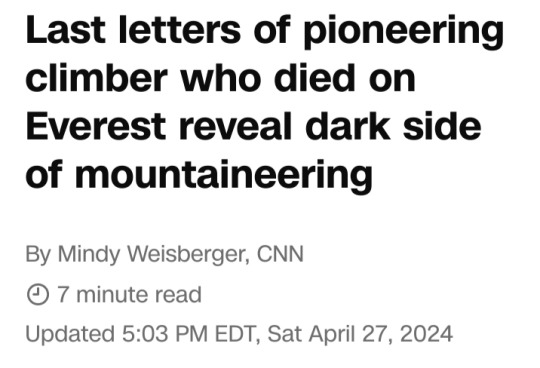
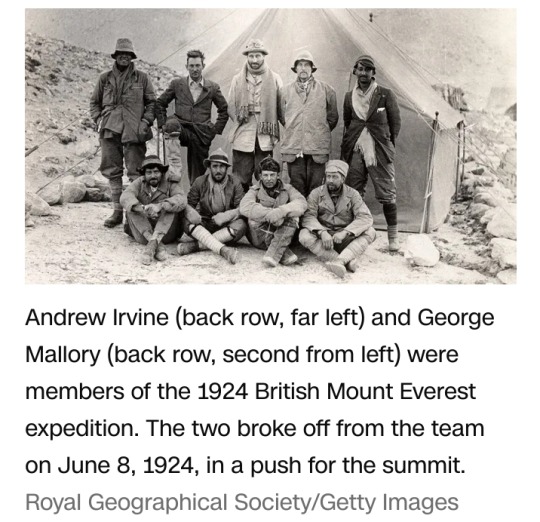
(CNN) — George Mallory is renowned for being one of the first British mountaineers to attempt to scale the dizzying heights of Mount Everest during the 1920s — until the mountain claimed his life.
Nearly a century later, newly digitized letters shed light on Mallory’s hopes and fears about ascending Everest, leading up to the last days before he disappeared while heading for its peak.
On 8 June 1924, Mallory and fellow climber Andrew Irvine departed from their expedition team in a push for the summit; they were never seen alive again.
Mallory’s words, however, are now available to read online in their entirety for the first time.
Magdalene College, Cambridge, where Mallory studied as an undergraduate from 1905 to 1908, recently digitized hundreds of pages of correspondence and other documents written and received by him.
Over the past 18 months, archivists scanned the documents in preparation for the centennial of Mallory’s disappearance.
The college will display a selection of Mallory’s letters and possessions in the exhibit “George Mallory: Magdalene to the Mountain,” opening June 20.
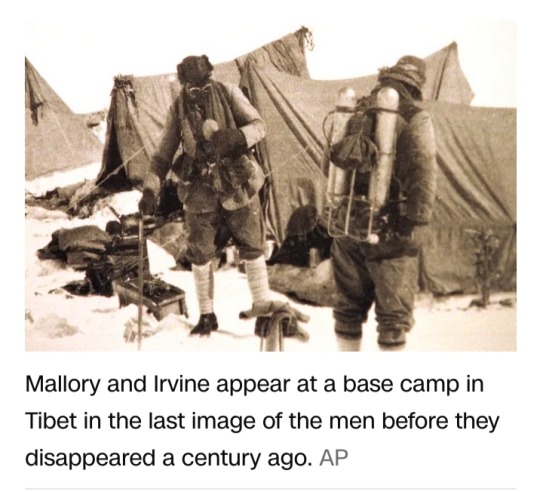
The Everest letters outline Mallory’s meticulous preparations and equipment tests, and his optimism about their prospects.
But the letters also show the darker side of mountaineering: bad weather, health issues, setbacks, and doubts.
Days before his disappearance, Mallory wrote that the odds were “50 to 1 against us” in the last letter to his wife Ruth dated 27 May 1924.
“This has been a bad time altogether,” Mallory wrote. “I look back on tremendous efforts & exhaustion & dismal looking out of a tent door and onto a world of snow & vanishing hopes.”
He went on to describe a harrowing brush with death during a recent climb, when the ground beneath his feet collapsed, leaving him suspended “half-blind & breathless.”
His weight supported only by his ice axe wedged across a crevasse as he dangled over “a very unpleasant black hole.”
Other letters Mallory exchanged with Ruth were written at the time of their courtship, while he was serving in Britain’s artillery regiment during World War I.
Throughout his travels, correspondence from Ruth provided him with much-needed stability during the most challenging times, said project lead Katy Green, a college archivist at Magdalene College.
“She was the ‘rock’ at home, he says himself in his letters,” Green said.
The archivist recounted one note in which Mallory told Ruth: “I’m so glad that you never wobble, because I would wobble without you.”
Yet while Mallory was clearly devoted to his wife, he nonetheless repeatedly returned to the Himalayas despite her mounting fears for his safety.
“There’s something in him that drove him,” Green said. “It might have been his wartime experience, or it might have just been the sort of person that he was.”
‘Documents of his character’
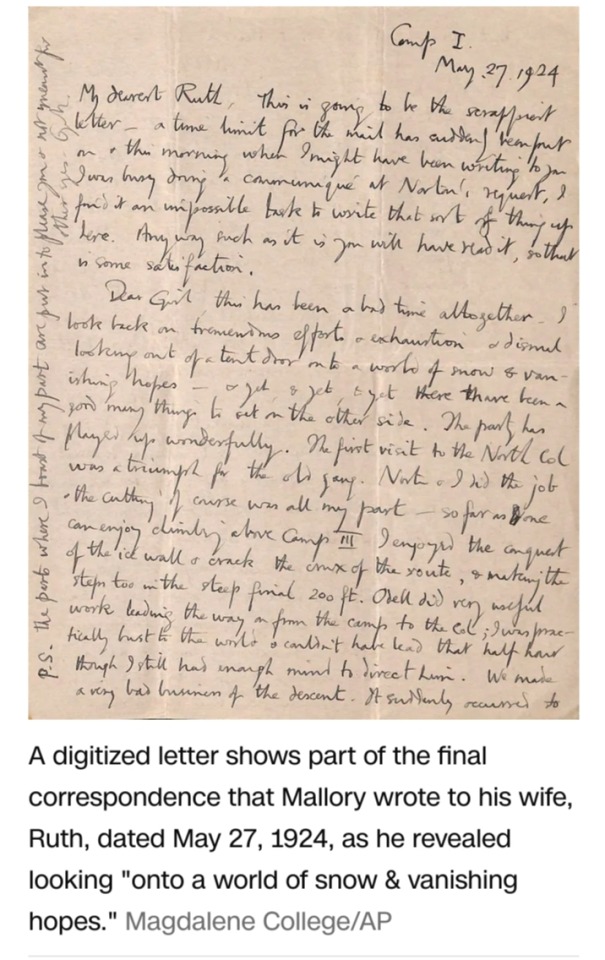
In total, the collection includes around 840 letters spanning from 1914 to 1924.
Ruth wrote about 440 of those to Mallory, offering an unprecedented and highly detailed view of daily life for women in the early 20th century, Green told CNN.
Together, the letters offer readers a rare glimpse of the man behind the legend, said Jochen Hemmleb, an author and alpinist who was part of the Everest expedition that found Mallory’s body in 1999.
“They are really personal. They are documents of his character. They provide unique insights into his life, and especially into the 1924 expedition — his state of mind, his accurate planning, his ambitions,” said Hemmleb, who was not involved in the scanning project.
“It’s such a treasure that these are now digitized and available for everyone to read.”
Frozen in place
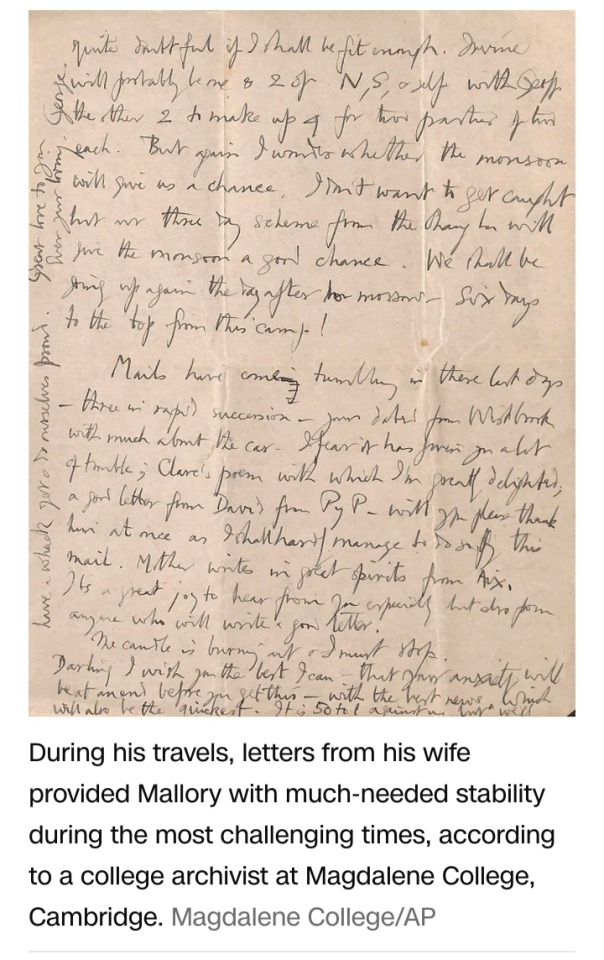
Three of the digitized letters — written to Mallory by his brother, his sister and a family friend — were recovered from Mallory’s body by the Mallory and Irvine Research Expedition, which ascended Everest seeking the remains of Mallory and Irvine.
On 1 May 1999, expedition member and mountaineer Conrad Anker found a frozen corpse at an altitude of around 26,700 feet (8,138 meters) and identified it as Mallory’s from a name tag that was sewn into his clothes.
Mallory’s body was interred where it lay at the family’s request, said Anker, who was not involved in the letter digitizing project.
“Having done body recoveries in other places, it’s very laborious, and it’s very dangerous at that altitude,” he told CNN.
“We collected some of his personal effects that went back to the Royal Geographical Society,” including the three letters that were later scanned at Magdalene College.
Mount Everest, the highest peak in the Himalayan mountain range, is also the tallest mountain on Earth, rising 29,035 feet (8,850 meters) above sea level on the border between Nepal and Tibet — an autonomous region in China.
Its Tibetan name is Chomolungma, meaning “Goddess Mother of the World,” and its Nepali name is Sagarmatha, meaning “Goddess of the Sky.”
However, these names were unknown to 19th-century British surveyors who mapped the region.
In 1865, the Royal Geographical Society named the peak Mount Everest after British surveyor Sir George Everest, a former surveyor general of India.
Mallory participated in all three of Britain’s first forays onto Everest’s slopes: in 1921, 1922 and 1924.
When he vanished in 1924, he was less than two weeks shy of his 38th birthday.
Many have speculated about whether Mallory and Irvine managed to reach Everest’s summit.
The climbers were last seen in the early afternoon of June 8 by expedition member and geologist Noel Odell, who was following behind and glimpsed them from a distance.
Odell later found some of their equipment at a campsite, but there was no trace of Mallory and Irvine.
“(Mallory) risked a lot despite the fact that he had a family back home and three small children,” Hemmleb said.
“We don’t know whether it was really irresponsible to make that final attempt, because we don’t really know what happened. It could be that in the end, he simply had bad luck.”
So close, yet so far

Decades after Mallory’s death, Sherpa Tenzing Norgay and New Zealand mountaineer Sir Edmund Hillary became the first to reach Everest’s peak, summiting on 29 May 1953.
In the years that followed, thousands attempted to climb Everest, with nearly 4,000 people reaching its summit.
More than 330 climbers have died trying since modern records were kept, according to the Himalayan Database, which compiles records of all expeditions in the Himalayas.
Some of those bodies remain on the mountain, frozen where they fell and visible to climbers who pass them by.
“If you’re out in this environment, you make peace with your own mortality and the deaths of others,” Anker said.
“You’re above 8,000 meters, and when there are weather changes or your own systems cease to function due to the lack of oxygen, it gets serious really quickly.”
When mountaineers are close to a mountain’s summit, they sometimes proceed even under dangerous conditions due to so-called summit fever, a compulsion to reach the peak even at the cost of their own safety.
It’s unknown whether Mallory was in the grip of summit fever when he died, but he might have thought that his reputation depended on summiting.
“That was going to be the defining moment in his life,” Anker said.
By comparison, Mallory’s team member Edward Norton had attempted to summit four days earlier but turned back at roughly the same altitude where Mallory and Irvine were seen for the last time.
“I had a conversation with one of Edward Norton’s sons a couple of years ago,” Hemmleb said.
“When I asked him, do you think it was mere luck that your father survived and Mallory died?"
He said, ‘No, I think there was one difference: My father, Edward Norton, didn’t need the mountain.’”
As a climber himself, Hemmleb took that message to heart.
“That is something I personally learned from Mallory,” he said. “You need to be very careful not to make yourself dependent on that summit success.”
A century has elapsed since Mallory’s death, but the digitizing of these letters assures that his story will keep being told, Hemmleb said.
“This will continue beyond my own lifetime, I’m certain of that,” he added. “In a sense, it’s the expedition that never ends.”

George Herbert Leigh-Mallory (18 June 1886 – 8 or 9 June 1924) was an English mountaineer who participated in the first three British Mount Everest expeditions from the early to mid-1920s.
#George Herbert Leigh-Mallory#George Mallory#Andrew Irvine#Mount Everest#Magdalene College#Cambridge#George Mallory: Magdalene to the Mountain#Himalayas#1924 British Mount Everest Expedition#Mallory and Irvine Research Expedition#Royal Geographical Society#Chomolungma#Sagarmatha#Sir George Everest#Nepal#Tibet#Sherpa Tenzing Norgay#Sir Edmund Hillary#Himalayan Database#expedition#summit fever#Everest letters#digitized letters#mountain climbing#1900s#20th century
1 note
·
View note
Text
Are there any age restrictions for climbing Everest?
Most expedition operators have age restrictions, and climbers must be at least 18 years old to attempt the Everest summit.
0 notes
Text
I know her and she's amazing :)
#everest#mount everest#mountain climbing#climbing#world record#women outdoors#women empowerment#nepal#sherpa
0 notes
Text
Ross woman’s documentary focuses on first Nepali woman to summit Everest
Ross woman’s documentary focuses on first Nepali woman to summit Everest
Despite having no background in filmmaking, Nancy Svendsen was so inspired by the story of Pasang Lhamu Sherpa that she spent 10 years making a …Ross woman’s documentary focuses on first Nepali woman to summit Everest

View On WordPress
0 notes
Text
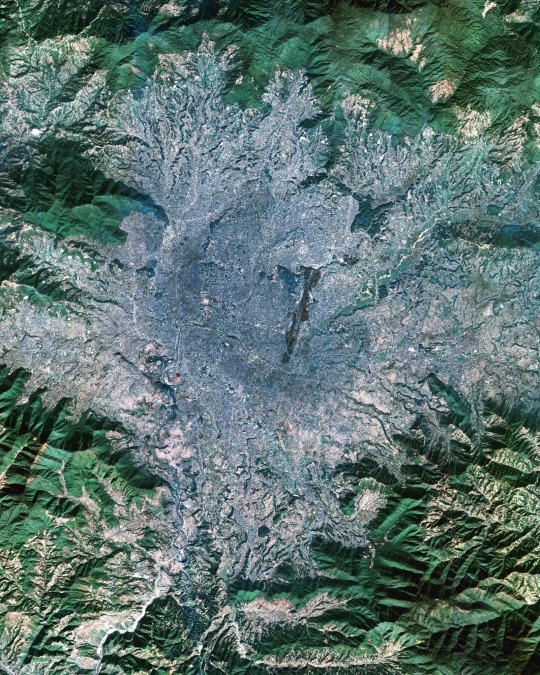
Kathmandu is the capital and most populous city in Nepal, with approximately 4 million inhabitants in its metropolitan area. Set in a valley of the Himalayas at an altitude of 4,600 feet (1,400 m), the city is often the first stop in Nepal for adventurers wishing to climb Mount Everest. It is also one of the oldest continuously inhabited places in the world and contains many ancient temples, pagodas and stupas.
27.710000°, 85.320000°
Source imagery: Maxar
186 notes
·
View notes
Text

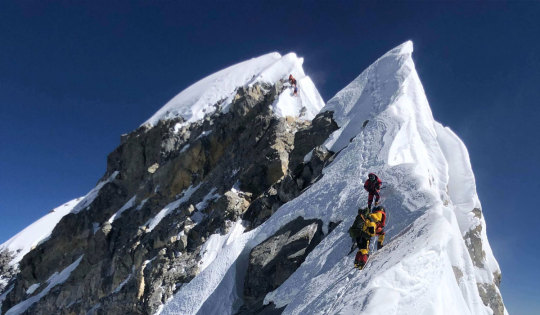
Why are Hundreds of Climbers Heading into the ‘Death Zone’ on Mt Everest This Spring?
Thick murky clouds fill the sky, with freezing winds carrying snow faster than 100 miles per hour. With a frigid –30 degrees Fahrenheit temperature, life-threatening snowstorms and avalanches are frequent.
And these are typical conditions on the world’s highest mountain: Mount Everest.
The behemoth towers 29,032 feet (8,849 meters) between Nepal and Tibet in the Himalayas, with its peak surpassing most clouds in the sky.
An attempt to climb Everest requires months, sometimes years, of training and conditioning – even then, reaching the summit is far from guaranteed. In fact, more than 300 people are known to have died on the mountain.
And yet the mountain still draws hundreds of climbers who are determined to reach its peak every spring. Here’s what it takes to make the climb and what has motivated some climbers to summit the world’s highest peak.
‘I thought I was in pretty good shape’
Dr. Jacob Weasel, a trauma surgeon, successfully summited Everest last May after conditioning for nearly a year.
“I would put on a 50-pound backpack and do two hours on a stair stepper with no problem,” Weasel said. “So, I thought that I was in pretty good shape.” However, the surgeon said he was humbled after discovering that his fitness was no match for the lofty athleticism required by the mountain.
“I would take five steps and have to take 30 seconds to a minute to catch my breath,” Weasel recalled of his struggle with the lack of oxygen available while ascending Everest.
Climbers aiming for the summit usually practice an acclimatizing rotation to adjust their lungs to the thinning oxygen levels once they arrive on the mountain. This process involves mountaineers traveling upward to one of the four designated camps on Everest and spending one to four days there before traveling back down.
This routine is repeated at least two times to allow the body to adapt to declining oxygen levels. It increases a climber’s chances of survival and summiting.
“If you took somebody and just plopped them up at the high camp on Everest, not even on the (top), they would probably go into a coma within 10 to 15 minutes,” Weasel said.
“And they would be dead within an hour because their body is not adjusted to that low of oxygen levels.”
While Weasel has successfully summited dozens of mountains, including Kilimanjaro (19,341 ft), Chimborazo (20, 549 ft), Cotopaxi (19,347 ft), and most recently Aconcagua (22,837 ft) in January, he said none of them compares to the high-altitude of Mount Everest.
“Because no matter how well you are trained, once you get to the limits of what the human body can take, it’s just difficult,” he continued.
At its highest altitude, Everest is nearly incapable of sustaining human life and most mountaineers use supplementary oxygen above 23,000 feet. The lack of oxygen poses one of greatest threats to climbers who attempt to summit, with levels dropping to less than 40% when they reach the Everest “death zone.”

Tents of mountaineers are pictured at Everest base camp in the Mount Everest region of Solukhumbu district on April 18, 2024.
‘It’s difficult to survive up there’
The first target for mountaineers is Everest base camp at approximately 17,000 feet, which takes climbers about two weeks. Then they ascend to the three remaining camps stationed along the mountain.
Camp four, the final one before the summit, sits along the edge of the death zone at 26,000 feet, exposing climbers to an extremely thin layer of air, subzero temperatures, and high winds powerful enough to blow a person off the mountain.
“It’s difficult to survive up there,” Weasel said. He recalls passing bodies of climbers who died on the mountain – which isn’t uncommon. The bodies of the fallen mountaineers are well-preserved, exhibiting little to no decay due to the intense cold temperatures.
“I am probably more familiar with death and the loss of life than most people,” the surgeon said. “For me it was just a reminder of the gravity of the situation and the fragility of what life is… even more so motivation for appreciating the opportunity.”
High-altitude cerebral edema (HACE) is one of the most common illnesses climbers face while attempting to summit. “Your brain is starved of oxygen,” Weasel said.
HACE results in the brain swelling during its attempt to regain stable oxygen levels, causing drowsiness, trouble speaking and thinking. This confusion is often accompanied by blurred vision and sporadic episodes of delusion.
“I had auditory hallucinations where I was hearing voices [of friends] that I thought were coming from behind me,” Weasel recalled. “And I had visual hallucinations,” he added. “I was seeing the faces of my children and my wife coming out of the rocks.”
Weasel recalled crossing paths with a friend, Orianne Aymard, who was trapped on the mountain due to an injury. “I remember staring at her for like five minutes and just saying, ‘I’m so sorry,’” Weasel said.
“I’ve spent over a decade of my life training to help people as a surgeon, and being in a position where there’s somebody who requires your help and you are unable to offer any assistance… that feeling of helplessness was tough to deal with,” Weasel said.
Aymard survived. She was rescued and suffered from several broken bones in her foot, in addition to severe frostbite on her hands. Despite all her injuries, Aymard is considered one of the lucky ones.

Mountaineers climbing during their ascend to summit Mount Everest on May 7, 2021.
‘Their bodies will get frozen into the mountain’
Everest has long been a tomb for climbers who have succumbed to harsh conditions or accidents on its slopes.
When a loved one or fellow climber is severely injured or dies on the mountain, it’s routine to leave them behind if you’re unable to save them, according to Alan Arnette, a mountaineer coach who summited Everest in 2014.
“What most teams do out of respect for that climber, they will move the body out of sight,” he said. And that’s only if they can.
“Sometimes that’s just not practical because of the bad weather, or because their bodies will get frozen into the mountain,” Arnette said. “So, it’s very difficult to move them.”
Seeing a corpse on Everest is comparable to seeing a horrible car accident, according to the mountain coach. “You don’t turn around and go home,” Arnette said. “You respectfully slow down… or say a prayer for that person, and then you continue.”
It’s been 10 years since the single deadliest accident on the world’s highest mountain, after an avalanche killed 12 Sherpa guides. And 2023 was recorded as the deadliest year on Everest, with 18 fatalities on the mountain – including five people that are still unaccounted for.
The process of recovering bodies is extensive, sometimes impossible. Helicopter rescues and search missions are challenging due to the high altitude and frequently treacherous conditions, resulting in some rescuers dying in their attempt to save others.
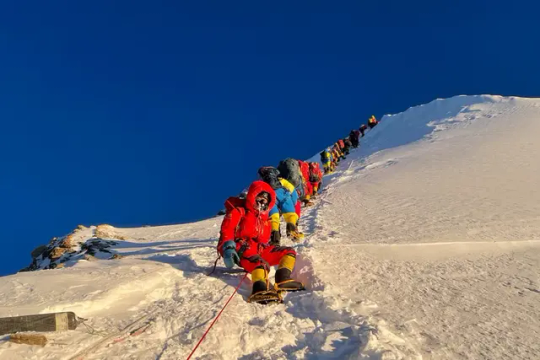
Mountaineers as they climb during their ascend to summit Mount Everest on May 12, 2021.
‘Watching the sunrise from 29,000 feet’
The 3,000 feet climb from camp four to the summit can take anywhere from 14 to 18 hours. Therefore, mountaineers typically leave the camp at night.
“That entire night was cold,” Weasel recalled. “It’s dark, it’s windy.” But it was proven to be worth it in the morning, he said.
“Watching the sunrise from 29,000 feet and having that pyramid of Everest’s shadow projected onto the valley below you…,” Weasel said. “It was probably one of the most beautiful things I’ve ever seen in my life,” he continued.
“It’s weird standing up there and knowing that everything else on the planet is below where you’re standing.”
The size of the mountain is humbling, the surgeon said. “I’ve never felt so small,” he recalled. “That mixture of humility and connectedness with something bigger than yourself is the proper place from which we ought to approach our existence on this planet.”
Like Weasel, Arnette summited at sunrise, and experienced this same feeling of “smallness.” At the top there were “more mountains than you can count,” Arnette remembered. “It was a sense of enormous gratitude and at the same time I knew I had to get back down.”
After about 20 minutes to an hour, climbers typically start to descend back to the base of the mountain.
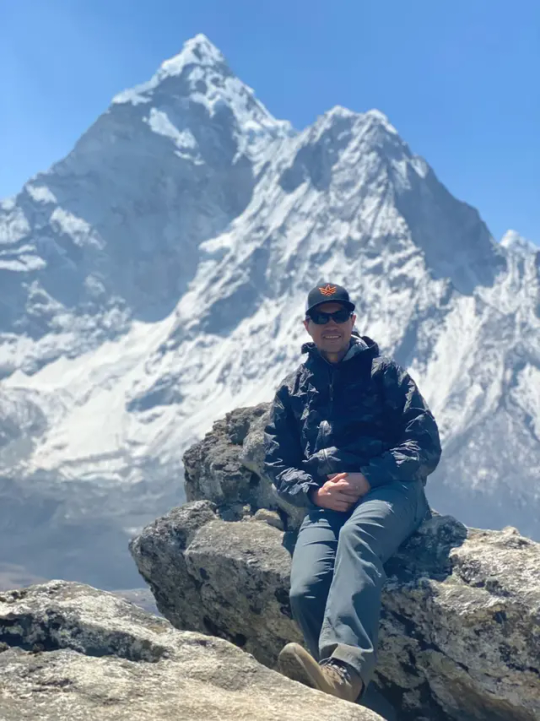
Jacob Weasel.
‘Bigger than yourself’
Before leaving for Nepal, Weasel was gifted an eagle’s feather as a beacon for his Native American heritage.
He was determined to plant the feather on top of Everest “as a symbol of our people and what we’ve endured for the past several hundred years,” Weasel said. “Showing that our spirit is not broken, but we’re able to rise above the things that have happened to us,” he added.
“I remember planting that eagle’s feather on the top of the world and the feeling of real privilege that I felt in representing our people.” And this is why he decided to summit Everest, to be an example that anything is possible for young Native children and his tribe.
“Knowing what it’s like up there, for me personally, the only real justification for going and putting your life, and other lives, at risk is if you’re climbing for a reason that is much bigger than you,” said Weasel.
Arnette attempted to climb Everest three times before he successfully summited.
“My first three tries, I wasn’t clear on my why,” Arnette said. When his mother was diagnosed with Alzheimer’s disease, he looked at his purpose for climbing differently.
“I wanted to do it to raise money for Alzheimer’s and honor my mother,” Arnette said.
There are approximately 300 people that have been issued a permit from the Nepal government to climb the mountain this year, according to Arnette. And he said the number is down from previous years.
“I think one of the reasons is because we had the 18 deaths last year, and people realize that Mount Everest is a dangerous mountain.”
However, he doesn’t believe that should deter climbers from attempting to summit. “I’m a big believer that when you go climb these mountains that you come home a better version of yourself,” Arnette said.
“Everest has become too commercialized with ‘you’re stepping over dead bodies’ and ‘it’s littered with trash,’” the mountain coach said. “The reality is that it is a very small degree all of that, but there’s a lot of joy that people get out of doing it,” he continued.
“And that’s the reason that we climb mountains.”
By Kara Nelson.

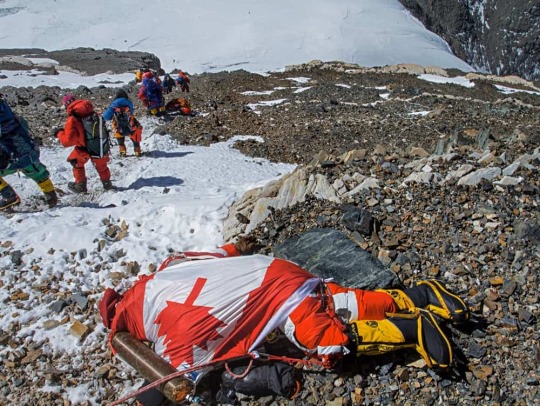
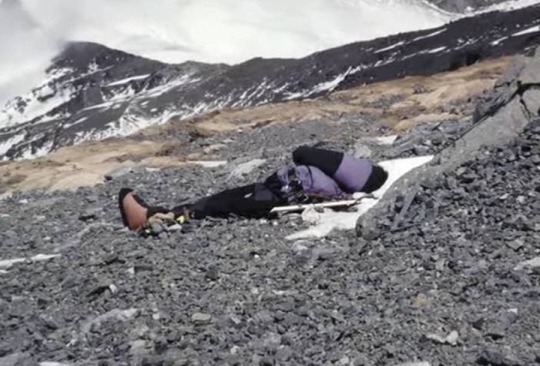


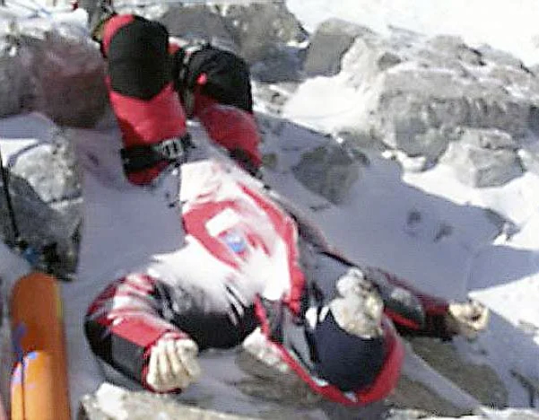
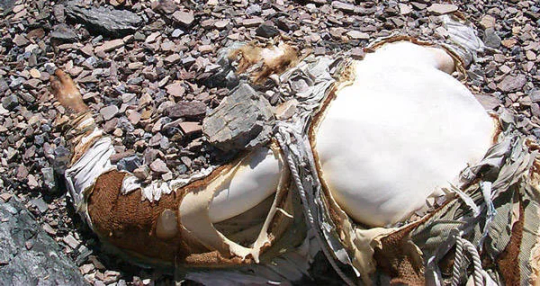
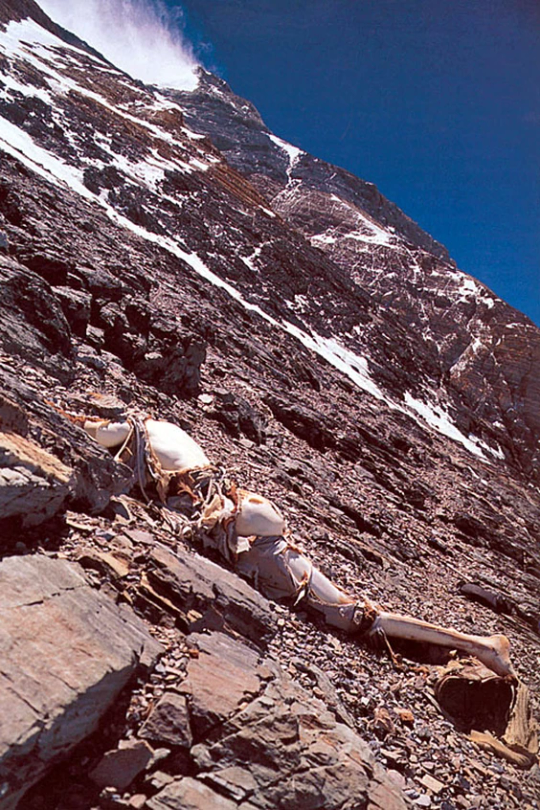

#Mt Everest#Mount Everest#Everest#The Death Zone#Why are Hundreds of Climbers Heading into the ‘Death Zone’ on Mt Everest This Spring?#world’s highest mountain#the Himalayas#mountain climbing#death on a mountain#history#history news#long reads#long post#long story
32 notes
·
View notes
Note
I say he is in Nepal, either at base camp, or less likely, scaling Everest. Your opinion on this theory?
Hi, Anon, as I said in a previous post, I have a slight obsession with all things Mount Everest, have read the books, watched the movies, the TV series, and every year when it's the push for the summit in May, I follow climbers on Instagram, and watch their treks up to the highest mountain on Earth. Soooo, I do have some knowledge on this subject. Here's my take...
I know Sam has said in interviews that one of his bucket list items is climbing Mount Everest. And he was supposed to star in that Everest movie. The thing is, climbing to the SUMMIT of Mount Everest is only done in May, usually mid May due to weather constraints. And the prep dictates you have to start 2 months before to acclimate to the high altitude. I'll talk more about that down below. IF you are able to spend the two months in either Nepal for climbing from the South side of Everest, or Tibet (controlled by China) for climbing from the North side of Everest, you will be climbing to almost 29,032 feet, 8,849 meters. This is literally the altitude that jet planes fly once they reach cruising altitude. Sam has this pesky thing called a contract to finish out the remaining seasons of Outlander. I highly doubt his Outlander contract, and the insurance company associated with it, would allow him to take such a risk. Every year, people DIE climbing up or on the way back down from the summit. And some people don't die, but they get severe frostbite and lose fingers, toes, tips of noses. It's not for the faint of heart, and it's not for handsome actors who need to keep their beautiful appendages intact for filming Outlander. Unless the writers can work on a storyline involving Jamie Fraser missing a few, um, things.
Having said that, it IS possible Sam could trek to Mount Everest BASE CAMP. This is the area at the base of the mountain that all climbers go to to prepare to climb higher up, and eventually to the summit. BUT, some people who aren't making summit bids, simply make Base Camp their one and only destination. And that may be a compromise Sam makes with Outlander producers. Base Camp is still REALLY, REALLY high. It's at 17,598 feet, 5,364 meters. Sam isn't putting himself in too much risk at Base Camp...unless there's an avalanche. Sadly, there have been avalanches there and many people have died, as a result, the last one being in 2015.
Everest Base Camp in Nepal is trekked either for the Summit bid season February to May, with all summit bids happening in May. OR, it is trekked JUST for the Base Camp in late September to November. We are now in November, so it IS possible. 👇
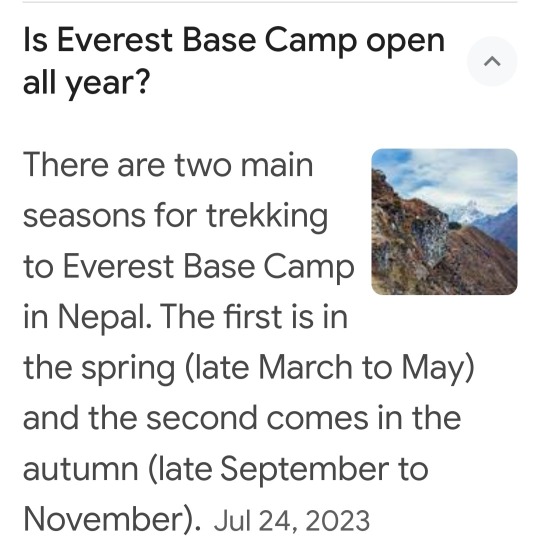
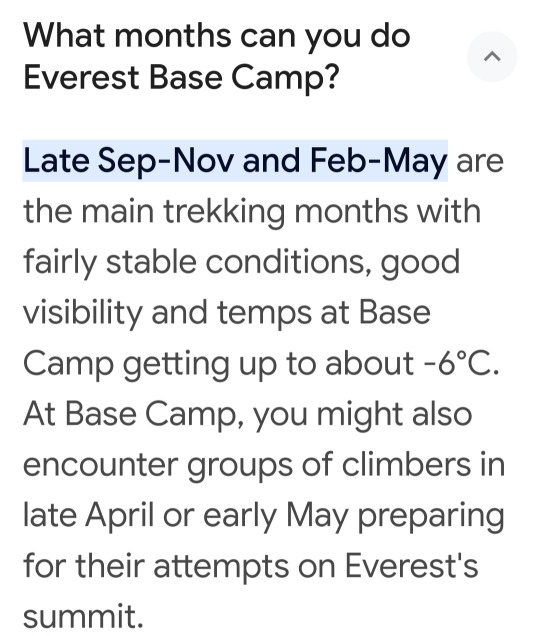
BUT, you don't simply hop on a plane and get plopped down at Base Camp's 17,000 feet altitude. You could quite literally die from High Altitude Cerebral Edema and or High Altitude Pulmonary Edema due to the low oxygen levels. Soooo, IF Sam wanted to trek to Mount Everest Base Camp in Nepal, he would have to start acclimating at least two weeks before. All travelers going from Nepal's capital, Kathmandu at an elevation of 4,344 feet stay there for a few days, and then they do a 14 day trek up the mountains, to allow their bodies to acclimate to the altitude and the lower oxygen levels. 👇
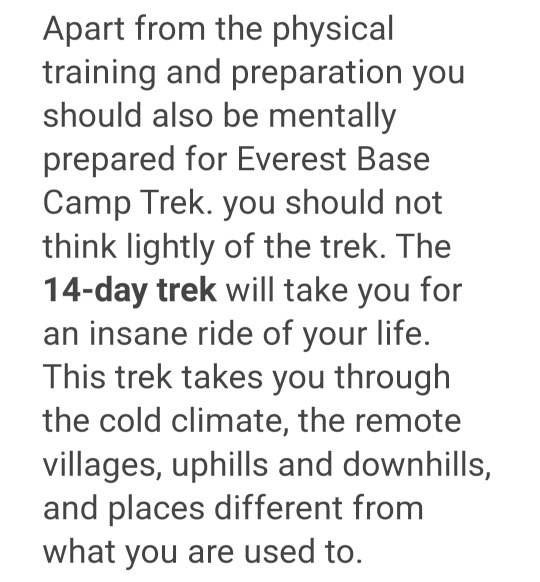
Sam would have to allow himself at LEAST 3 WEEKS to make the Everest Base Camp trek. 2 weeks to climb there and acclimate, and then you want to spend at least a week there camping and just being there. Then you have to allow time for the return climb back down. This isn't a weekend excursion.
As for whether Sam is actually trying to climb to Mount Everest SUMMIT. That would be a definite NO. Not only from an Outlander insurance and contract issue, but also because it's not summit climbing season. 👇

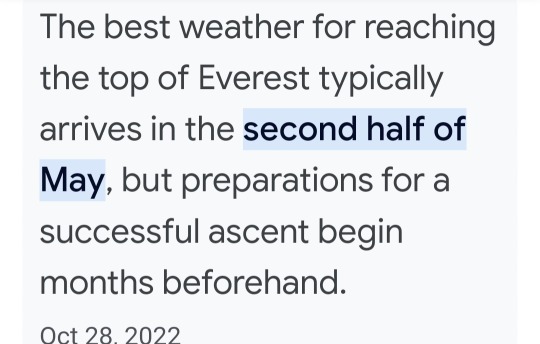
And for people who want to climb to the Summit, they have to make a 2 MONTH commitment. The summit climb entails the two weeks to climb to Base Camp. And then at least 6 weeks, climbing up and down from each of the higher camps. I think there are at least 4 camps that climbers stay at, higher and higher on the mountain, until they reach the Summit. 👇
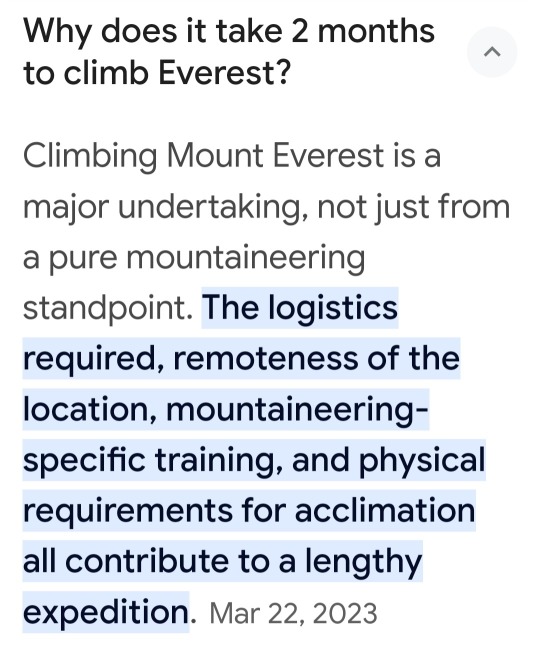
So, if a climber wants to go for a Summit bid, which is always in mid-May, they would have to start in mid-March and literally be on Mount Everest at the various camps the whole two months. It's a huge commitment. Most companies charge around $40,000 for the whole expedition. The reputable ones assign each climber a Sherpa to guide you. The Sherpas are natives to the area and they are expert climbers who are born in the area, therefore their bodies are completely acclimated to the high altitude. The expedition companies hire them to help climbers up the mountain. They set all the safety ropes, set up the camps, make the meals, and deal with the inevitable emergencies along the way. No one should climb without a Sherpa. Also, most companies will only take on a climber for a Summit bid if they can show previous experience in climbing at high altitude and have summitted a few of the highest peaks on Earth. That's not Sam. So, if anything, Sam would probably only be allowed to climb to Base Camp.
As you can see, I'm really, really into all things Everest and could keep writing all day hahaha. But, I'll stop here. I hope that was helpful info, Anon.

#samheughan#sam heughan#mount everest#everest#nepal#kathmandu#tibet#north side#south side#north face#south face#sherpas#base camp#everest base camp#summit#everest summit#outlander
56 notes
·
View notes
Text
The Nepalese army says it has removed eleven tonnes of rubbish, four corpses and one skeleton from Mount Everest and two other Himalayan peaks this year.
It took troops 55 days to recover the rubbish and bodies from Everest, Nuptse and Lhotse mountains.
It is estimated that more than fifty tonnes of waste and more than 200 bodies cover Everest.
The army began conducting an annual clean-up of the mountain, which is often described as the world’s highest garbage dump, in 2019 during concerns about overcrowding and climbers queueing in dangerous conditions to reach the summit.
The five clean-ups have collected 119 tonnes of rubbish, 14 human corpses and some skeletons, the army says.
This year, authorities aimed to reduce rubbish and improve rescues by making climbers wear tracking devices and bring back their own poo.
In the future, the government plans to create a mountain rangers team to monitor rubbish and put more money toward its collection, Nepal's Department of Tourism director of mountaineering Rakesh Gurung told the BBC.
For the spring climbing season that ended in May, the government issued permits to 421 climbers, down from a record-breaking 478 last year. Those numbers do not include Nepalese guides. In total, an estimated 600 people climbed the mountain this year.
This year, eight climbers died or went missing, compared to 19 last year.
A Brit, Daniel Paterson, and his Nepalese guide, Pastenji Sherpa, are among those missing after being hit by falling ice on 21 May.
Mr Paterson’s family started a fundraiser to hire a search team to find them, but said in an update on 4 June that recovery “is not possible at this time” because of the location and danger of the operation.
Mr Gurung said the number of permits was lower this year because of the global economic situation, China also issuing permits and the national election in India which reduced the number of climbers from that country.
The number of permits will likely drop more after Nepal’s Supreme Court ordered the government in May to limit permits. The preliminary order didn't set a maximum number.
Mr Gurung says he welcomes the order and the government is thinking about reforms such as staggering climbers to reduce traffic jams at the summit.
#mount everest#environmentalism#science#environment#nature#himalayas#good news#trash#nepal#pollution
17 notes
·
View notes
Text

The Scotsman interview 10 September 2023
Outlander star Sam Heghan has revealed he is ready for the "next challenge" when he finishes working on the hit show - and suggested it may involve scaling Mount Everest.
Writing in a new version of his first memoir, Waypoints, the Scottish stage and screen star revealed he has been pitching the idea of a TV documentary which would see him follow in the footsteps of the British explorer and mountaineer George Mallory.
He made three expeditions up the world's highest mountain in the 1920s but disappeared during the third along with climbing partner Andrew Irvine in 1924. Although Mallory's body was eventually found 75 years later, the mystery of whether he reached the summit has never been resolved.
Heughan was previously due to star alongside Ewan McGregor in a feature film recalling the race to conquer Everest in the 1920s, however, the project which was due to start filming last year never got off the ground.
Heughan started working on Outlander 10 years ago and seven series of the show have been made to date. An eighth and final series has been commissioned, although filming has been delayed to the writers' strike which has crippled Hollywood.
Heughan has already starred in Men in Kilts, an American documentary series following the actor and his Outlander co-star Graham McTavish around Scotland. A second series was made in New Zealand.
Waypoints, which followed Heughan as he walked the West Highland Way, was described as a "journey of self-discovery" as the actor, who was brought up in Dumfries and Galloway and Edinburgh, recalled the pivotal points in his life.
In a new final chapter of Waypoints, the 43-year-old actor revealed how completing his book had felt "like the end of the first chapter of his life and the beginning of a second."
He writes: "I'm nearing the end of my time on Outlander-eight seasons and ten years' of shooting - and the show has really shaped who I am.
"It has given me great opportunities and valuable experience that I can build on moving forward"
"I'm excited for the future. but it feels vitally important to acknowledge where I've come from"
"I would be where I am today with my past successes and (multiple!) failures"
"As a young man, I dreamed of working in the acting industry and being well-respected. It's certainly a dream come true and now I'm ready for the next challenge"
"A dream of mine has been to see the highest mountain in the world"
"I wrote in Waypoints about the Everest movie project that fell through and was disappointed I never made it to Nepal"
"However, more recently, I have been pitching a TV show that follows that dream (and the footsteps of George Mallory) from the UK to the Himalayan plateau and the slopes of Everest"
"Perhaps, If I'm lucky enough and dream hard enough I may yet find myself on the slopes of 'Chomolungma,' the earth's highest mountain"
"However, this time I'll be better prepared and ensure I'm not walking alone (and carrying plenty of snacks!)."
Instagram theoutlanderlounge
84 notes
·
View notes
Text
Here's your incredible friendship story of the day:
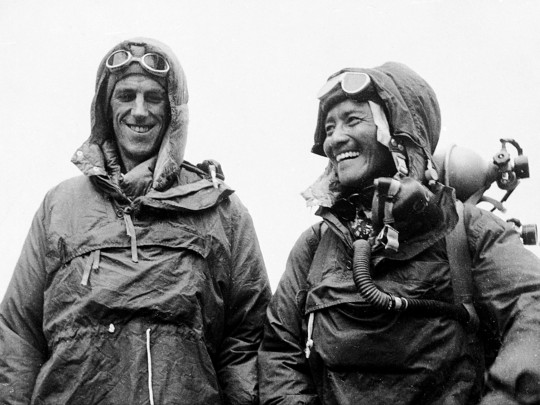
In 1953, Edmund Hillary and Tenzing Norgay became the first two people to ever summit the highest mountain in the world, Mount Everest. Before the commercialised hiking expeditions of the 21st century, Hillary and Norgay had to make the climb without a pre-fixed route, discovering their own path to the top (one of which later became known as the Hillary Step in the Everest climbing trail).

The pair did not know each other well beforehand but met through their mountaneering peers. Norgay (a sherpa, Himalayan locals well-known for their mountaneering prowess) apparently made a lasting first impression on Hillary due to his incredible mountaneering skills, patience, complete with his "flashing, irresistible smile".
In one ocassion during their few earlier expeditions together, Hillary stepped on a crumbling ice and almost fell to his death before Norgay saved his life. This made him determined to ask Norgay to be his partner for his Everest Summit expedition.
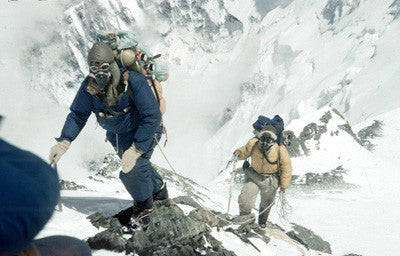
Amongst other members of the expedition, their pairing became the first one who were successful, reaching the highest point on Earth at 11:30 a.m. on May 29, 1953.
At the top, Hillary hilarously recalled extending his hand to shake Tenzing's hand in "a good Anglo-Saxon fashion," but his Nepalese-Indian friend jumped him on the back and gave him a massive hug instead. As he said, it was the “great moment for which I had waited all my life, [...] I waved my arms in the air and then threw them around Hillary, and we thumped each other on the back until, even with the oxygen, we were almost breathless!”.
But beyond this monumental achievement, the gentlemen's agreement they made at the top was perhaps an equally impressive commitment.

Being the only people in the world who were present, Norgay and Hillary made a promise to present their a success as a joint effort. Both countrymen were under international pressure to divulge who was actually the first to step foot on the summit. Despite the rising colonial tension at the times, both Norgay and Hillary refused to say anything other than they reached the summit together as a team, carrying the secret to their deathbeds.
After Everest, Hillary devoted his life to assisting the overlooked sherpa people of Nepal. He established the Himalayan Trust, constructing many schools and hospitals in Nepal. Norgay continued to climb mountains all over the world for the rest of his life and died in his beloved Himalayas.
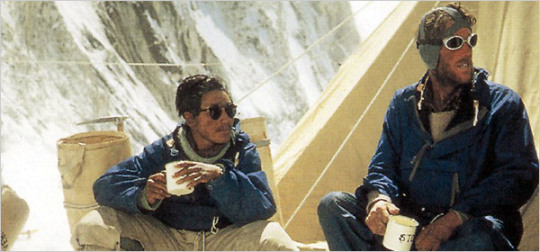
Hillary and Norgay remained lifelong friends, bonded for life. When Tenzing Norgay died in India in 1986, the country was in a massive political turmoil and all the streets in Darjeeling were closed due to confrontations with Nepalese separatists.
Edmund Hillary was the only foreigner allowed to enter the region, as reporters recounted how protesters parted ways to enable him to pay respects to his old friend.
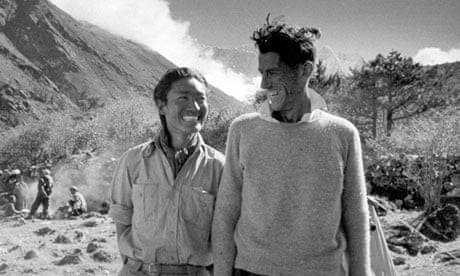
In 2003, their sons Peter Hillary and Jamling Norgay climbed Everest together, celebrating the 50th anniversary of their fathers' memorable climb that changed the world forever.

#friendships that transcended lifetimes#friendships that changed the world#this one quite literally!#them on top of everest tho 🥺#let's have a decent handshake lad- Nope let me give you a massive hug!!#i'm a sucker for incredible friendships#everest#climbing#tenzing norgay#edmund hillary#mountaneering#nepal#new zealand#tibet#india#himalayas
190 notes
·
View notes
Text
After 7 years of service in an IDF special forces unit, Captain H was finally discharged. As a parting gift, his soldiers bought him a ticket to Nepal so he could fulfill his dream of climbing Mount Everest.
He was on his 3rd day of climbing on Saturday, October 7, when he heard about the war back home in Israel. So he turned around, chartered a private helicopter to Katmandu, boarded a flight to Tel Aviv, and was back in uniform on Monday. Terrorists - you will never have this!

32 notes
·
View notes